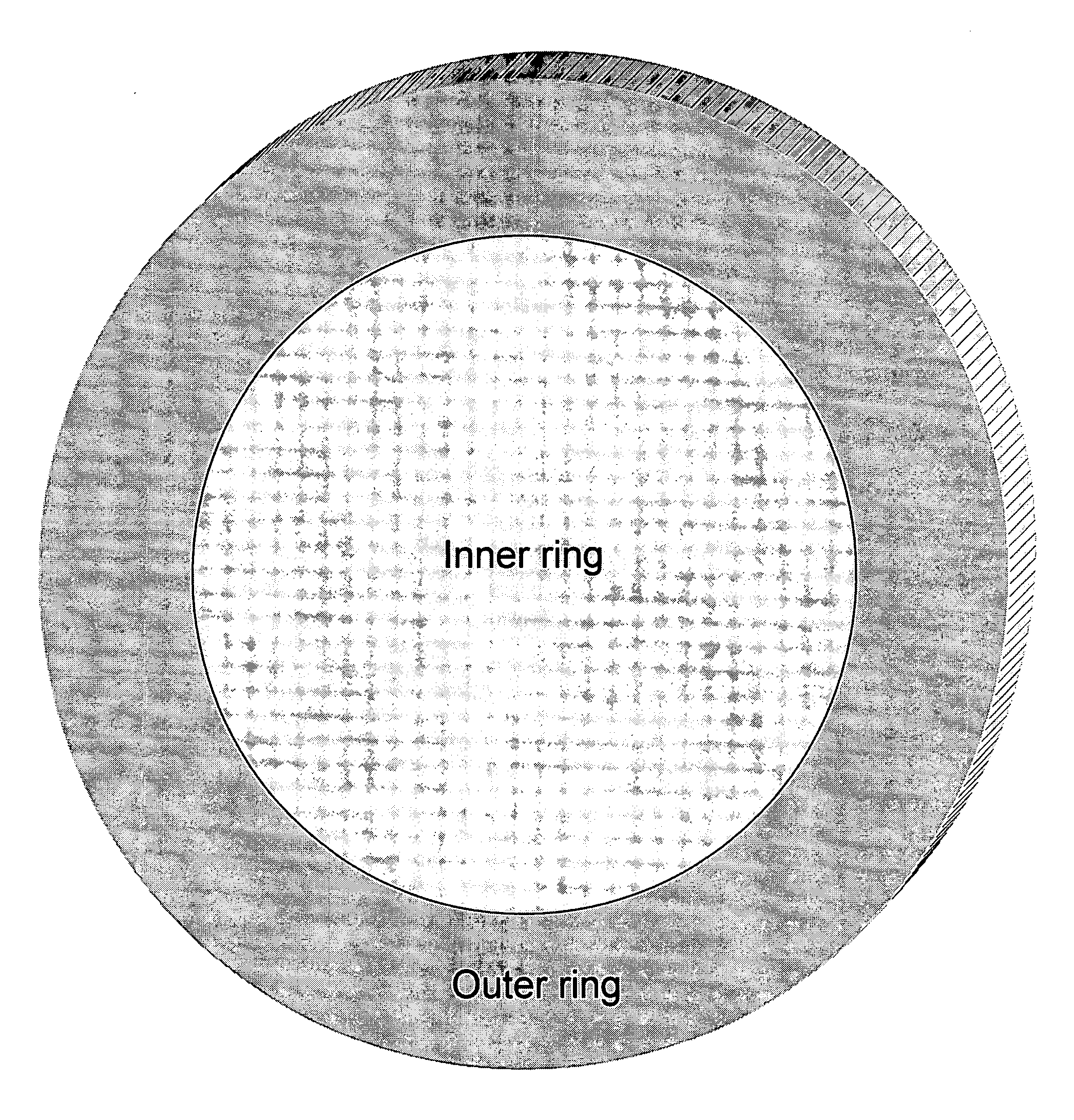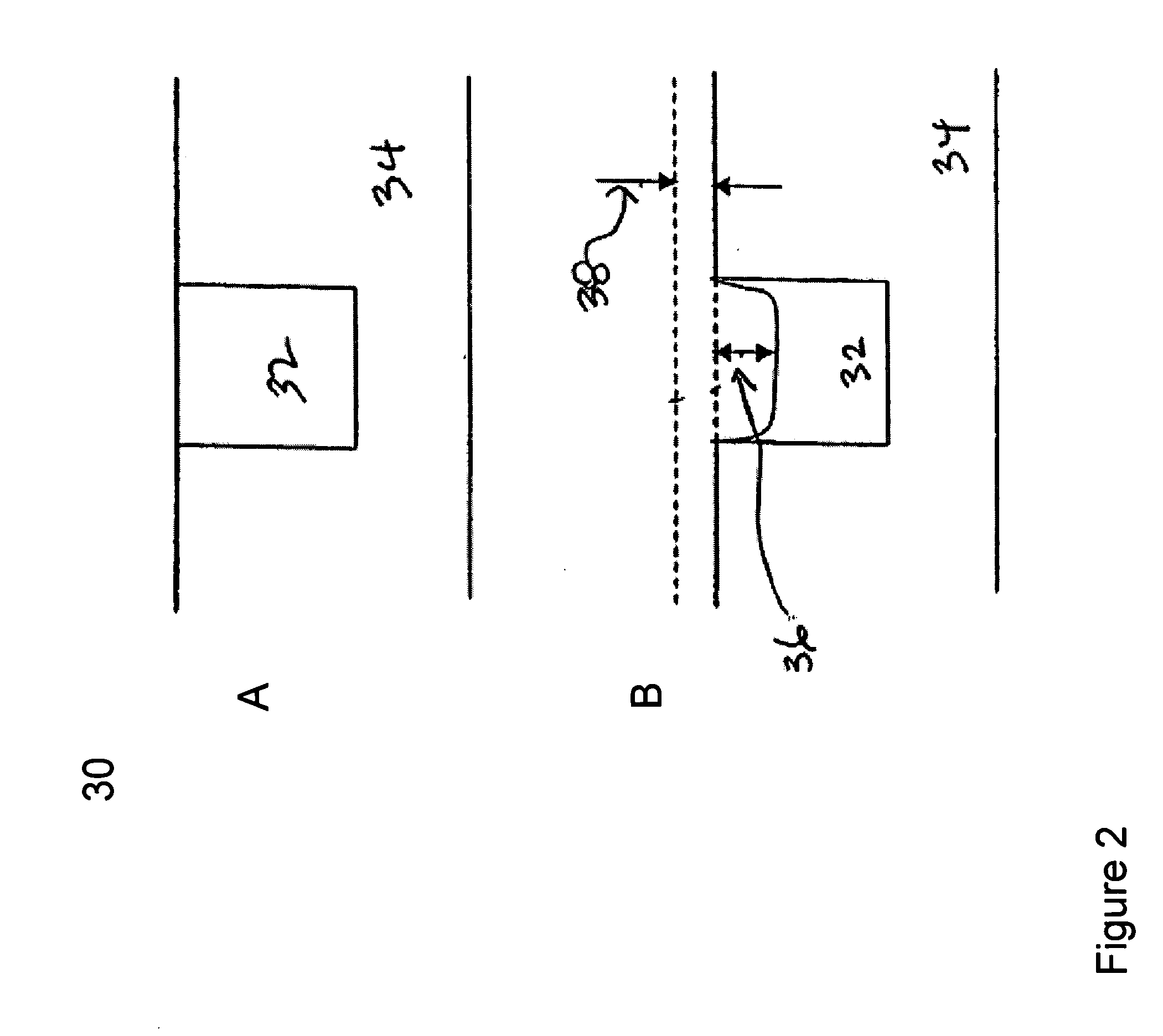Customized polishing pads for CMP and methods of fabrication and use thereof
a technology of polishing pads and cmp, which is applied in the direction of manufacturing tools, lapping machines, abrasive surface conditioning devices, etc., can solve the problems of increased design complexity, inability to achieve customized tribological, chemical and frictional characteristics, and the art of cmp pads, which are both open-pore and closed-pore polymeric pads, etc., to achieve the effect of reducing the number of defects, reducing the number of planarizations, and increasing the length
- Summary
- Abstract
- Description
- Claims
- Application Information
AI Technical Summary
Benefits of technology
Problems solved by technology
Method used
Image
Examples
example 1
[0217] Customized pad A, designed for polishing oxides, contains a urethane with 70D hardness. Pads are molded using liquid casting and are formulated using methods previously described. Amongst the components a 70D isocyanate, a polyol chain extender, a curative agent, a stabilizer, used for UV protection, and a porosity agent are used for pad manufacture. The pour is carried out at about 150-160° F. After the pour the material is allowed to settle and cure for approximately 15 minutes. Then the pad is removed from the mold and put in an oven for approximately 12 hours for post-cure at a uniform temperature between about 100° F.-200° F. The thickness of the pad is 80 mils and the diameter of the pad is 20 inches. A double side tape is adhered to the backside to get the pad ready for polishing. Customized pad B is similar to customized pad A in terms of formation but the hardness is lower at ˜65D.
[0218] Prestonian plots are presented for the two subject pads described above (FIGS. ...
example 2
[0220] Pads for polishing oxides are manufactured in a similar fashion as described in example 1. Further, the pads have been functionally graded to improve polishing performance. In FIGS. 28-32 planarization efficiency of Neopad's customized and planarization length comparisons are made using patterned wafers. FIG. 28A shows the die measurement plan where 9 dies are chosen per wafer measurement. FIG. 28 B depicts the structural elements within each of the individual dies. Results are shown in FIGS. 29 and 31, which compares the oxide thickness as a function of the layout pattern density within one dies for three polishing times (30 s, 60 s, and 120 s) for commercial and Neopad's customized pads respectively. The global axis in FIGS. 29 and 31 is for polishing done as a function of pressure and velocity. Die 2 is chosen since it is in the middle of the wafer and sees an effect both from the outer edge of the pad as well as the inner edge of the pad. The slope is approximately 0.5-0....
example 3
[0221] Three pads are fabricated for copper CMP. All three novel pads have a novel micro-structure, are radially graded, can be are sub surface engineered with boron nitride as the solid lubricant, and can be low shear integral pads. (The three novel pads are: 1) a surface engineered pad (novel pad A), 2) a low-shear pad (novel pad B) and 3) a low-shear surface-engineered pad (novel pad C).
[0222] Additionally, copper lines in wafers subjected to the performance testing were analyzed using x-ray diffraction (XRD) and compared to unprocessed wafers to monitor whether or not substantial changes in the copper had occurred, due to stress.
[0223] In FIG. 33 XRD data are displayed. Lattice constant measurements are carried out on wafers polished using each of the five experimental pads (commercial A and B) and novel pads (A, B, and C) and compared to measurements obtained from an unpolished wafer. The lattice constant of the unpolished copper films is 3.6086 Å. The measured lattice consta...
PUM
| Property | Measurement | Unit |
|---|---|---|
| Tg | aaaaa | aaaaa |
| surface tension | aaaaa | aaaaa |
| size | aaaaa | aaaaa |
Abstract
Description
Claims
Application Information
 Login to View More
Login to View More - R&D
- Intellectual Property
- Life Sciences
- Materials
- Tech Scout
- Unparalleled Data Quality
- Higher Quality Content
- 60% Fewer Hallucinations
Browse by: Latest US Patents, China's latest patents, Technical Efficacy Thesaurus, Application Domain, Technology Topic, Popular Technical Reports.
© 2025 PatSnap. All rights reserved.Legal|Privacy policy|Modern Slavery Act Transparency Statement|Sitemap|About US| Contact US: help@patsnap.com



